Published on: May 24, 2023 | Written By: Ronie Jade Biosada
May 16-22, 2023 | In a resounding display of dedication to justice and community well-being, the Lupong Tagapamayapa Incentives Awards (LTIA) Regional Awards Committee (RAC) IX, chaired by the Department of the Interior and Local Government (DILG), vice-chaired by Department of Justice (DOJ) and composed of esteemed members from Liga ng mga Barangay (LNB) Regional Chapter, representative from the Regional Peace and Order Council – the Philippine National Police (PNP), Regional Trial Court (RTC) and Civil Society Organizations (CSOs), recently concluded a meticulous assessment and valdiation of barangays in Zamboanga Peninsula.
Driven by the shared vision of fostering peace, resolving conflicts, and promoting harmonious coexistence, this diverse and accomplished committee embarked on a comprehensive evaluation of the region’s barangays. Drawing upon their collective expertise, the committee diligently reviewed and analyzed the performance, initiatives, and impact of each barangay’s Lupong Tagapamayapa.
Among the 1904 barangays, assessed were the following:
- Menzi and Baluno, Isabela City
- Sinunoc, Zamboanga City
- Lumbia, Pagadian City, Zamboanga del Sur
- Olingan, Dipolog City, Zamboanga del Norte
- Upper Pulacan, Labangan, Zamboanga del Sur
- Sumadat, Dumalinao, Zamboanga del Sur
- Sto. Niño, Katipunan, Zamboanga del Norte
- Talinga, Leon B. Postigo, Zamboanga del Norte
- Tinongtongan, Diplahan, Zamboanga Sibugay
- Sta. Barbara, Imelda, Zamboanga Sibugay
The assessment was conducted based on multiple criteria indicators, including:
Efficiency in Operations: The committee evaluated the barangays’ ability to handle cases promptly and efficiently. This criterion assessed the effectiveness of their administrative processes, records management systems,systematic maintenance of records and overall operational efficiency of the Lupong Tagapamayapa.
Effectiveness in Securing the Settlement of Interpersonal Disputes: The committee examined the success rate of the barangays in facilitating the amicable settlement of interpersonal disputes. They assessed the ability of the Lupong Tagapamayapa to mediate conflicts, facilitate dialogue, and achieve resolutions that are fair, just, and acceptable to the parties involved.
Creativity and Resourcefulness of the Lupon: This criterion measured the barangays’ innovative and resourceful approaches in resolving conflicts. The committee looked for evidence of creative problem-solving, the utilization of alternative dispute resolution techniques, and the implementation of initiatives that fostered cooperation and reconciliation within the community.
Area or Facility for KP Activities: The committee evaluated the barangays’ provision of suitable spaces or facilities dedicated to Katarungang Pambarangay (KP) activities. They considered the availability of conducive venues for mediations, meetings, and other KP-related events that promote community engagement and participation.
Financial and Non-Financial Support: The committee assessed the NGA and Local Government’s efforts in providing financial and non-financial support to the barangays. This criterion encompassed the allocation of resources, training and capacity-building programs, and access to relevant tools and materials necessary for effective dispute resolution.
Through a rigorous evaluation process, encompassing these criteria indicators, the committee scrutinized the performance of each barangay’s Lupong Tagapamayapa. Their dedication to this evaluative undertaking sought to unearth and celebrate the exceptional barangays that have gone above and beyond to establish a climate of trust, unity, and justice within their respective communities.
This thorough and meticulous assessment, covering an extensive range of criteria, served as a testament to the committee’s commitment to recognizing the invaluable contributions of barangays in Zamboanga Peninsula. By shining a spotlight on exemplary initiatives, the assessment process brought to the forefront the extraordinary efforts of these barangays in promoting community harmony, resilience, and conflict resolution.
As the assessment drew to a close, the committee witnessed firsthand the remarkable achievements and transformative impacts that have unfolded within the barangays of Zamboanga Peninsula. The dedication and unwavering commitment of these communities, working hand in hand with their Lupon, have played an instrumental role in fostering peaceful coexistence and instilling a sense of justice within the fabric of their neighborhoods.
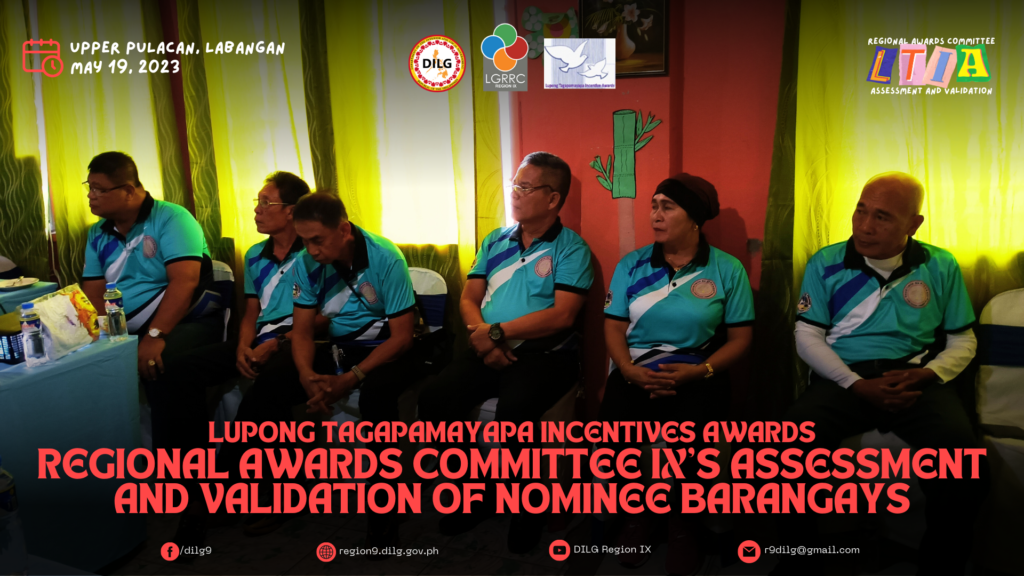



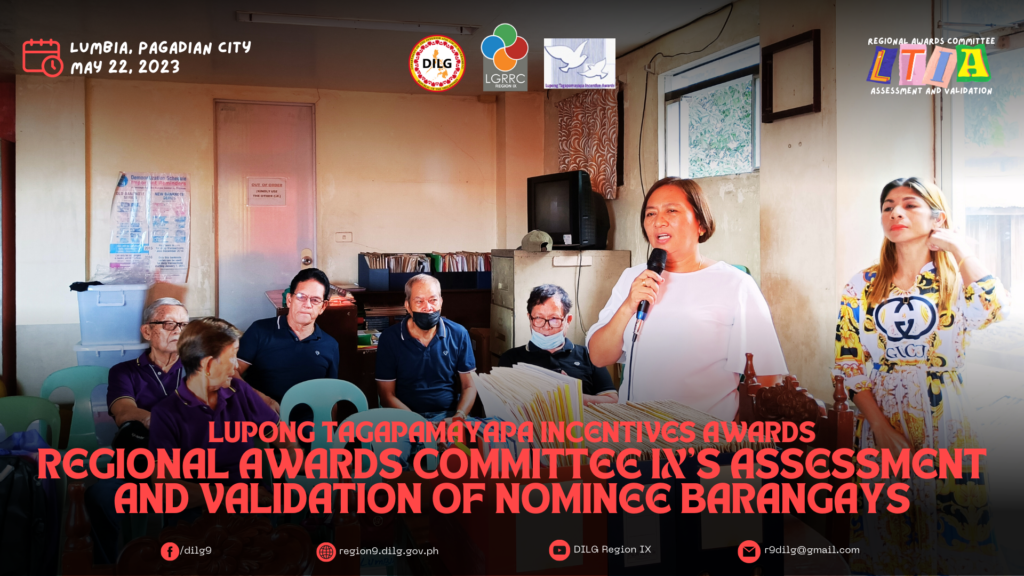



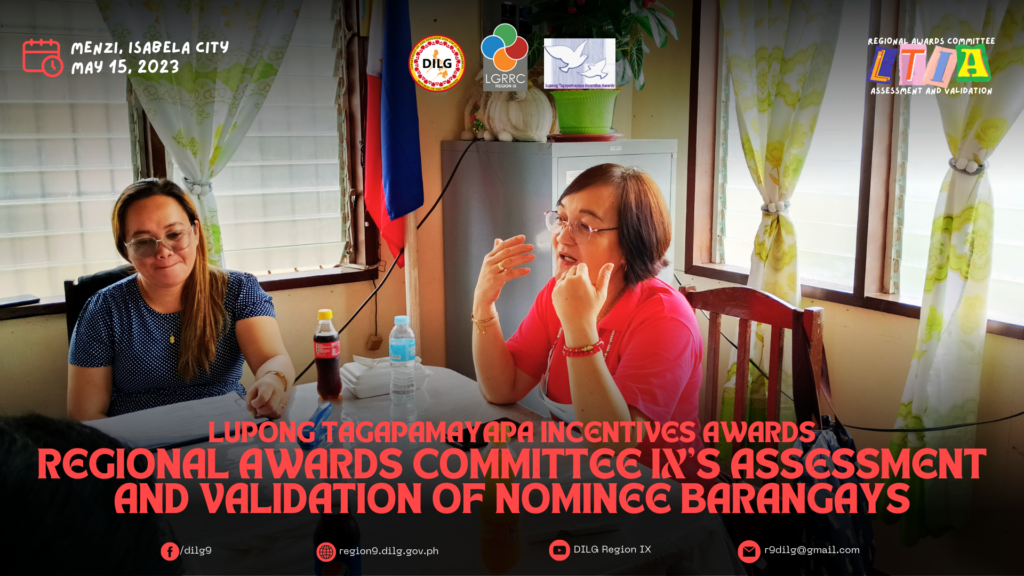
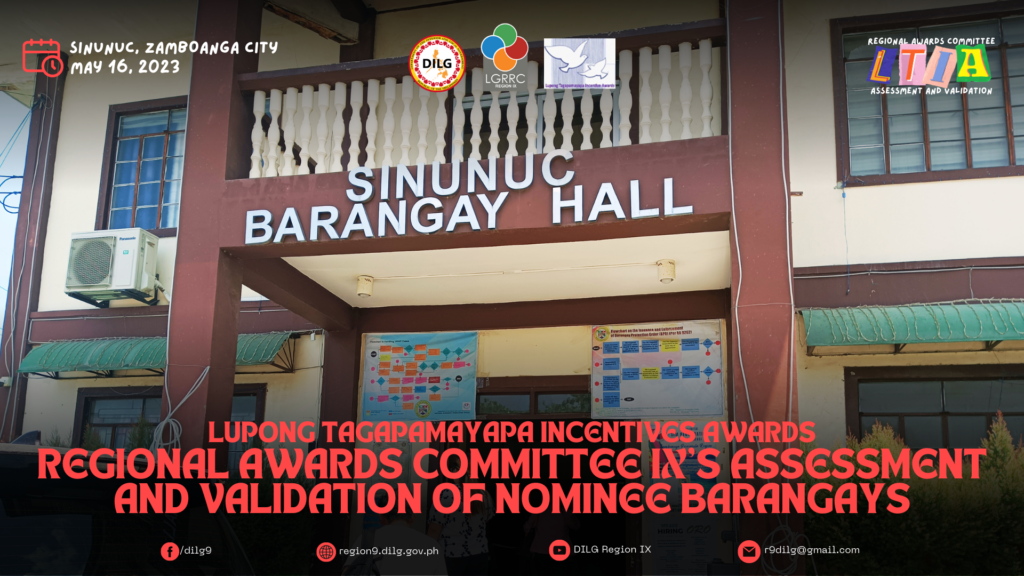
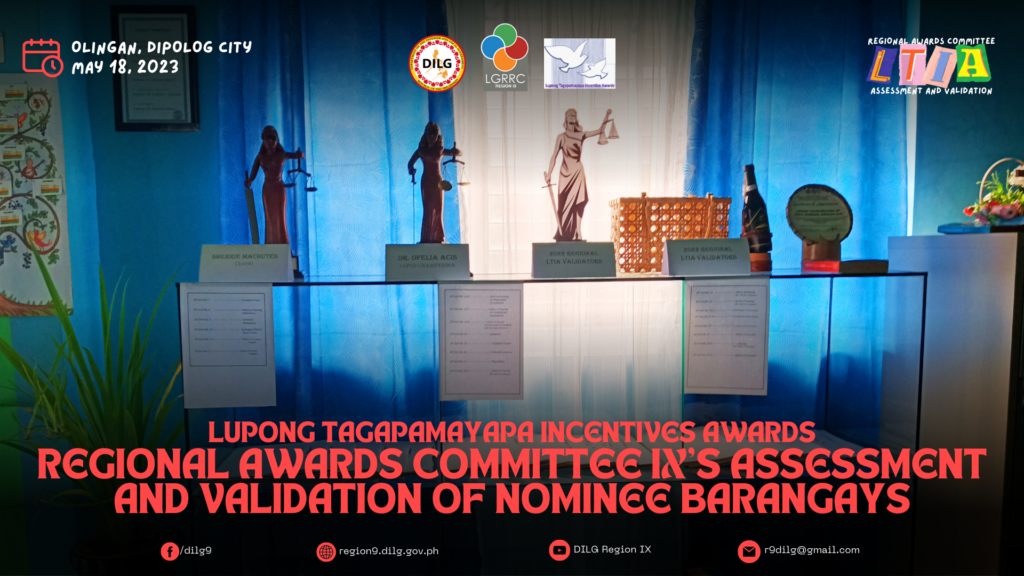



 View All Videos
View All Videos